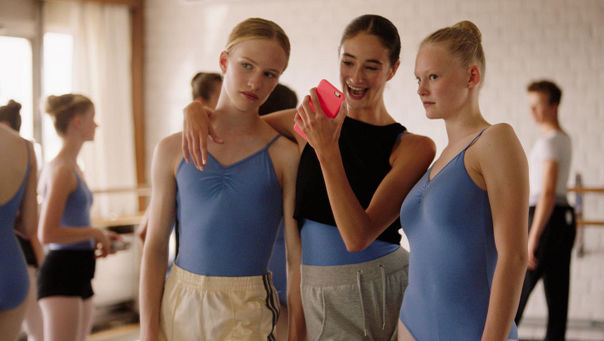Becoming Yourself
Victor Morozov

Judging by its rich prize harvest, a cinematic direction which embraces corporality and incites the public towards an empathic scan of the human body is riding high. Take a film like TOUCH ME NOT (2018), winner of the Golden Bear at the Berlinale and which also screened at the Sarajevo Film Festival – no need to venture into psychological depths. For its filmmaker Adina Pintilie, observing the lumpy yet fascinating epidermis is more than enough, since her movie marks a radical shift in the attitude towards corporality – from repulsion or indifference to clinical interest. One might argue that Pintilie’s docudrama, with its disdain for the traditional narrative, has already reached an extremity of this direction. However, a more audience-oriented treatment of the body as a territory of negotiations and a subject to change has remained virtually uncharted, for it requires not only dexterity but also courage. So it is not really surprising that a film which merges beautifully a rather accessible narrative and an original preoccupation for sexual transformations comes from a debutant: the talented Lukas Dhont.
GIRL (2018), his first feature film, deals with the struggles of a teenage transsexual called Lara (Victor Polster) to come to terms with her own body. And while the matter has already been tackled in a more or less performative fashion, Dhont’s script, written in collaboration with Angelo Tijssens, proves to be particularly idiosyncratic. Usually, when cinema approaches such LGBTQ topics, it does so under the form of an eternally perpetuated conflict between generations. It has become commonplace to depict the main characters – most often youngsters – in the process of dealing with their parents’ rage or disagreement. The protagonists act like martyrs, caught up in the friction with a retrograde world that does not fully understand their needs.
None of this ballast in GIRL, which begins right in the middle of the transformation process. The movie brilliantly skips past all eventual misunderstandings between Lara (whose birth-name was called Victor, just like the actor) and her father that could have occurred at the starting point of her metamorphosis. So when we see that Lara’s father is actually the only supportive figure around (even the little brother revolts against her motherly behaviour by calling her Victor), we cannot help but praise the scriptwriters’ intuition. The film moves skilfully since it shares information with parsimony, and it never becomes clear, for example, what happened to Lara’s mother, who is completely out of the picture. Little by little, we understand that Lara’s family has made some sacrifices in order to provide her with the best conditions: she moved with her close ones to another and dreams of becoming a ballerina (an interest already explored in Dhont’s earlier short movies). Still, her rigid, boyish body seems to be a problem, although the subtly shaped, orange-red color scheme of the film matches perfectly Lara’s sublime traits.
With this being said, GIRL feels less innovative when it comes to the actual coming-of-age narrative, which includes most of the conventional tropes – during the period documented by the film, Lara experiments with sexual desire, even if her romantic attempts with a boy are a failure. She also has to attend dancing classes, and her evolution (while being choreographed by Sidi Larbi Cherkaoui) has nothing more to offer than an average “dance genre” film. Nonetheless, the movie seems particularly interested in structural compositions, as Lara’s growth, while connected to her gracious ballet dancing, is a bloody and painful one. Luckily, Dhont is aware that his true subject is somewhere else, and almost every scene consumes itself in sadness and unspoken regret – her father might take care of her, but his sense of understanding, even though more hip, is as superficial as any other, because he fails to deeply empathize with Lara’s trauma.
Supported within the family, yes; but by choosing to focus on an updated, open-minded milieu, the script provides sharper insight into the so-called society gaze. In perhaps the film’s most powerful scene Lara – while battling with her body and apparently winning – goes to a party at one of her otherwise seemingly tolerant classmate’s who demands that she reveals her genitals. We then realize that society, no matter how prepared in theory, still puts a barrier between “us” and “them.” As a precocious example of mature understanding, Lara tries to enter a world that is not yet prepared to welcome her. For all I know, GIRLis a necessary movie, one that pushes notions of acceptance and empathy to another level.

